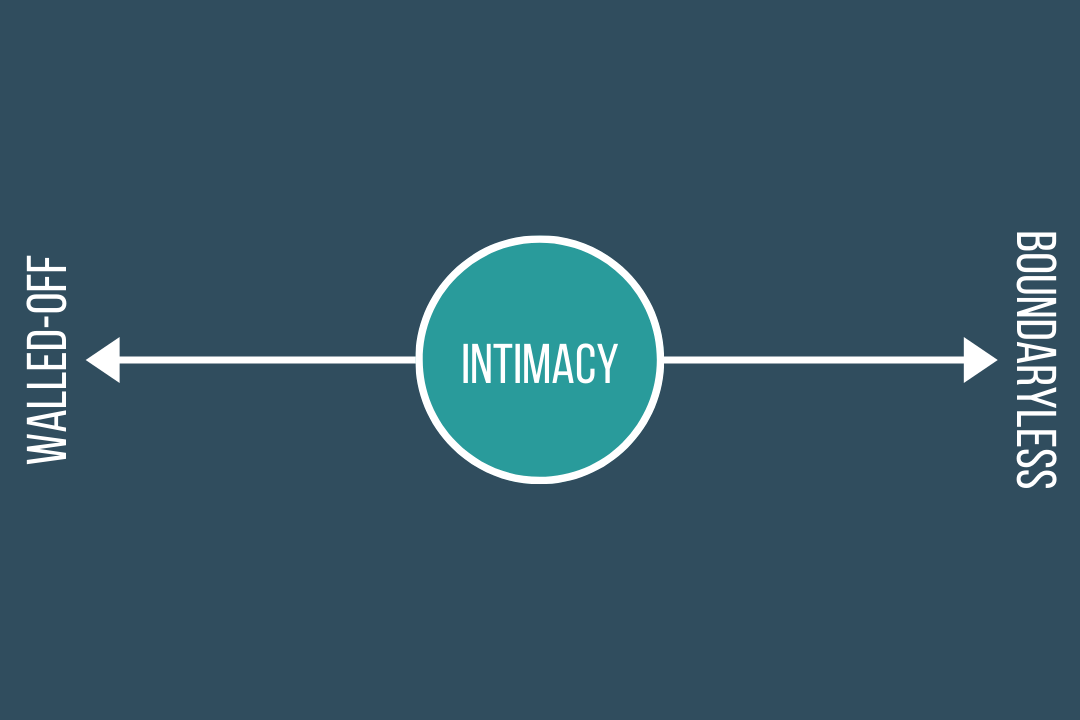Sandra was frustrated.
“Every time I try to get closer to Alex, he pulls away.
“All I want is to feel a deeper connection with him. To get him to share what he’s thinking and feeling. To step up his game and act like he actually wants to be with me...
“… but he just keeps dismissing my needs. He says I’m too clingy. He never wants to talk about our issues, and how we can be better.
“He just goes into his man cave, or retreats into his head.
“It’s like he doesn’t want to be close to me anymore. Does he even love me?”
Alex had been listening silently, arms folded, head bowed and looking slightly away as he listened to Sandra speak.
When she finished, he looked up and took a deep breath.
“I guess I’m always a disappointment.
“I’m a failure because I’m not trying hard enough. But when I do try, I do it wrong, or I don’t have enough enthusiasm.
“Even when I give her what she wants, it’s not enough to make her happy.
“And when she’s upset, she just unloads on me. She tells me how everything is my fault. Sometimes she yells at me. And when I stand up for myself, she gets more upset that I can’t handle her “honesty” or “authenticity.” To me… it just seems mean.
“A lot of the problems she complains about are things I think most people deal with. I don’t see them as being as big of a deal as she does. But if I don’t take them as seriously as she wants me to, I’m in the doghouse.”
Sandra and Alex are a fictional couple…
But they reflect a pattern I see a lot in relationships.
Maybe you recognize a little bit of their story in your own relationship, or the relationship of your parents or friends.
One person is constantly wanting more connection, reassurance, intimacy, and affection. We’ll call this person the Pursuer.
The other person is constantly withdrawing, avoiding, dismissing, and feeling like a failure. And this person is the Distancer.
The more the pursuer tries to get closer to the Distancer, the more it pushes them away.
And the further away the Distancer moves, the more the Pursuer wants the reassurance and validation that comes with closeness.
It’s a nasty cycle.
It feels incredibly destructive... not even a little healthy.
Deep down, what most of us want in a committed relationship is to feel understood, accepted, respected, and connected.
If that’s the case, why do we seem to get stuck in these miserable cycles?
Why do we end up doing the things that push away the people we want to be close to?
What’s standing between us and a healthy sense of closeness and intimacy? (Not smothering.)
To find the answer, let’s turn to the Relationship Grid – an intuitive tool created by Terry Real, the author of The New Rules of Marriage.
The Relationship Grid shows that relationship health and intimacy happen at the intersection of our relationship with boundaries, and our relationship with self-esteem.
When taken to unhealthy extremes, boundaries and self-esteem can absolutely destroy your connection with your partner, your self-respect, and your relationships.
Let’s Talk Boundaries
A good boundary is like a fence around your house.
It protects the people you love from bad things like robbers, or door-to-door salesmen, or dogs who might poop on your lawn.
But a fence doesn’t just keep bad things out. It also let’s good things in… like friendly neighbors, the mailman, or your Chinese food delivery from Grubhub.
Boundaries in your relationship should protect you from being manipulated, smothered, and getting burned-out while allowing for connection and intimacy between you and your partner.
But boundaries are often taken to an extreme.
Boundarylessness
One one side of the boundary spectrum you’ve got boundarylessness.
When you are boundaryless, you have no container for your own emotions.
You say what you feel. You are an emotional time bomb that could go off the moment someone says or does something that hurts or offends you.
At the same time, you are not protected from the emotions of others. When someone treats you poorly, or says something that hurts your feelings, you take it personally. You react and lash out without thinking.
You frequently blame others for your emotions, moods, words, and actions.
People who experience a lot of boundarylessness are often “Anxious,” like Sandra.
Their unboundaried emotions often consume the emotions of others and smother any real chance at intimacy.
Walled-Off
On the other extreme of the spectrum, you have someone who is completely walled-off.
Your boundaries can be so impermeable and thick that connection with other people – even people you love – is virtually impossible.
This is common of someone who is an “Avoider” like Alex.
People who hide behind a big emotional wall are often perceived to be distant, aloof, and uncaring.
But on the other side of that wall is often a person who is insecure, afraid of being hurt, or deeply uncomfortable feeling their emotions.
They put up the wall to protect themselves from others… but also to protect others from their worst selves.
In the past, when people have been persistent enough (or launched an emotional cannonball that was large enough) to get through that thick emotional wall, they’ve usually been met with anger, insults, and judgement.
A walled-off person is typically just a boundaryless person hiding behind an emotional fortress.
The goal in any healthy relationship is to move away from the extremes and towards the middle of the spectrum.
You don’t want boundaries that are so impenetrable that you isolate yourself from connection with others. You have to be courageous enough to step out from behind that wall, feel your emotions, and connect with others more regularly.
On the flip side, you want enough of a boundary in place that you can remain grounded, safe, and rational. You don’t want to lose control of your emotions or be so deeply affected by the emotions, words, or actions of others that you become an emotional bomb.
Let’s Talk Self-Esteem
The other axis we need to be aware of if we want to create a more healthy, connected, and intimate relationship is our self-esteem.
On the one-down side, you’ve got the serious weight of self-loathing and personal shame to worry about.
On the one-up side, you’ve got grandiosity knocking on the door.
One-Down - Shame
Shame is dangerous. It’s the belief that there is something inherently wrong with you.
“I am bad/unworthy/unlovable/fundamentally flawed.”
When you act as if you are unworthy of love, you’re more likely to be withdrawn, depressed, and anxious.
You will often be desperate to seek validation and reassurance from your partner by any means necessary. Your self-worth is borrowed, and dependent on how other people feel about you at any given moment.
You become a pleaser. Dedicated to doing everything in your power to make others happy so you can feel good about yourself.
Or…
You become an emotional hermit.
A perpetual victim.
You withdraw, sulk, and complain that nothing you ever do is good enough.
You stop putting in effort, because you have told yourself that any effort will result in failure, so it’s better to simply stop trying.
You self-medicate and attempt to numb your emotional pain with food, alcohol, drugs, porn, gaming, or other behaviors and substances.
It’s really difficult to have a relationship with someone who is perpetually in a 1-down position. In many cases it feels like you spend most of your time reassuring them, validating them, begging them to stay engaged, or emotionally carrying them through life, not partnering with them.
One-UP - Grandiosity
On the other side of the self-esteem spectrum – the one-up position – you’ll encounter Grandiosity.
Grandiosity is a feeling of superiority.
People who are spending time in the one-up position find it easy to judge and criticize others. They see other people’s flaws, but not their own.
They are obvious to the impact their words and actions have on the people around them.
Grandiosity is particularly dangerous because it feels good.
Someone who spends a lot of time in the grandiose mindset will have a lot of experience with eye-rolling, telling people what they’re doing wrong, and being passive-aggressive or manipulative when they don’t get what they want.
Ultimately grandiosity and shame are both about one thing: Contempt.
When you experience shame, the contempt is directed towards yourself.
When you experience grandiosity, the contempt is directed towards everyone BUT yourself.
The root cause, however, is the same.
The solution is to make your way towards the center of the chart.
If you’re more prone to taking a one-up position, it’s time for you to express more gratitude and appreciation. Make a concerted effort to point out the good in others.
If you’re often in a one-down position, it’s time to start talking about it.
According to shame researcher, Brené Brown, shame needs 3 things to survive: secrecy, silence and judgement.
When you start talking about the things you’re afraid of, then consciously changing your inner narrative to one that is more compassionate and positive, you will quickly see a shift in your self-worth.
You will slowly lift yourself out of your shame pit.
The intersection of boundaries and self-esteem create 4 quadrants.
One-up and Boundaryless
One-up and Walled-off
One-down and Boundaryless
One-down and Walled off
Look at the chart to see where you spend most of your time.
Check in with yourself from time-to-time… especially when your relationship is struggling.
Assess what you need to do to get away from the extremes and towards the center, which represents relationship health.
True intimacy is only possible when we feel safe enough to be open and vulnerable, while feeling like we are standing on equal ground with our partner.
No caretaking. No condemnation. No emotional outbursts. No stonewalling.
If you’re caught in a cycle of pursuit and distancing, or child and caretaker, victim and villain… this is how you break it.
It only takes one person to move toward the center of the Relationship Grid to make your marriage better.
Now that you know about the Relationship Grid, and the gateway to intimacy and relationship help, you might be thinking, “It’s great that I know about this. But how do I do it?”
If so, that’s great! You’ve figured out that real change doesn’t happen unless you take action.
If you want help implementing the principles you learned here today, I’ve got a live training coming up with relationship expert, Kyle Benson in the Epic Marriage Club.
The whole goal of this training is to provide practical, actionable things for you to get away from the extremes and into a place where you feel safe, secure, and connected in your marriage.
Click here to check it out.








